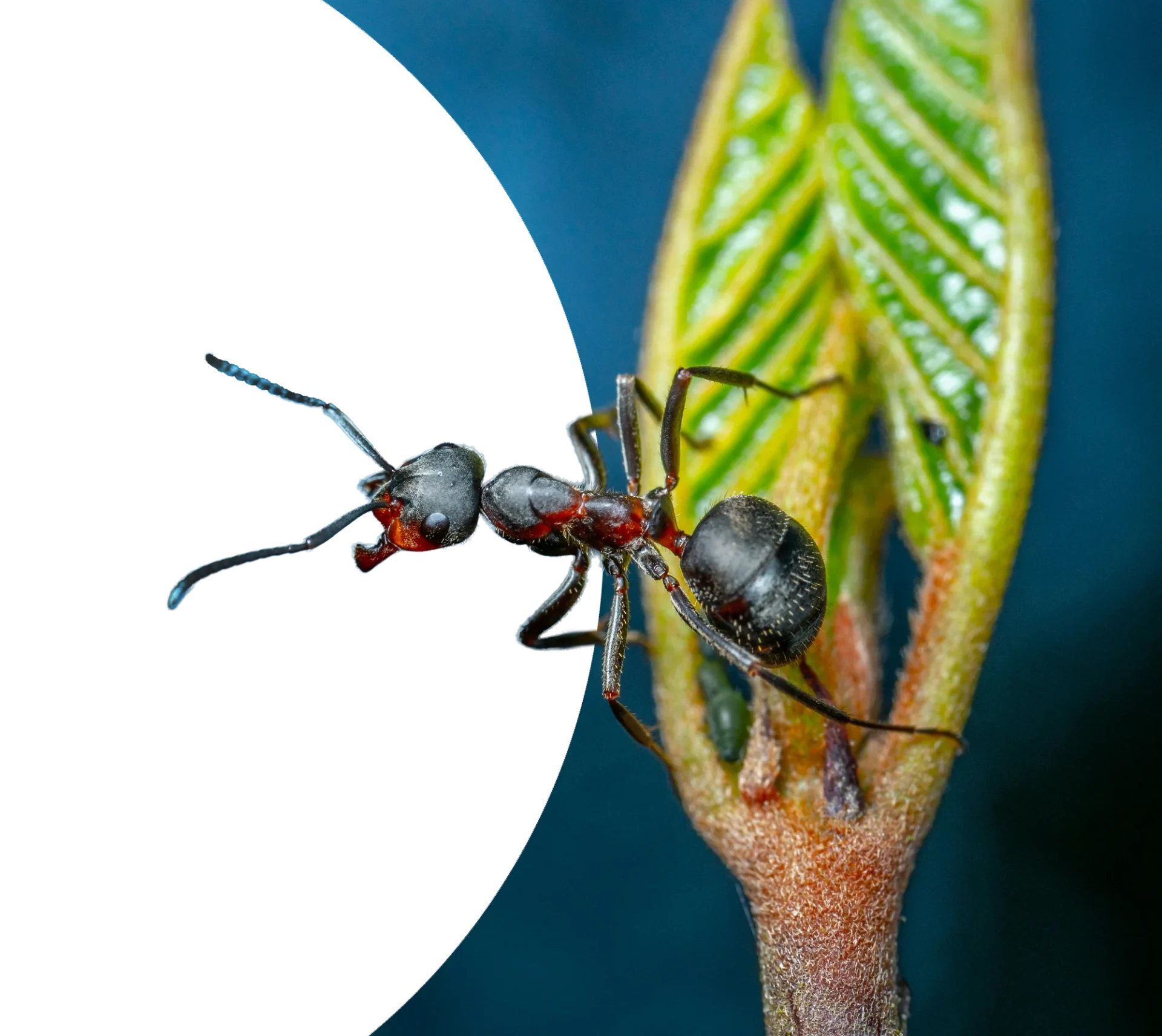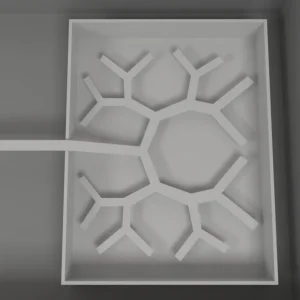Ant Mazes
Overview
The ant model is one of the popular non-rodent models used in research. Unlike traditional models such as mice and rats, ants provide the advantage of representing the complexity of physiology associated with certain aspects of insect behavior and ecology. Ants share many similarities with other insects in terms of anatomy and genetics, making them a suitable model for research in entomology. These similarities enhance the potential to translate research findings into broader ecological and behavioral contexts. Moreover, their small size and social structure make them ideal for studying collective behavior and responses to environmental changes.

-

Ant Double Bifurcation T
$1,190.00 – $1,890.00 Select options This product has multiple variants. The options may be chosen on the product page -

Ant Colony Maze
$790.00 Add to cart -

Ant T Maze
$1,190.00 Add to cart -

Ant Y Maze
$990.00 Add to cart -

Ant Binary Tree Maze
$690.00 Add to cart -

Diamond Maze
$2,490.00 Add to cart -

Ant Double Y-Maze
$990.00 Add to cart -

Ant Sucrose Feeder 2
$990.00 Add to cart -

Ant Sucrose Feeder 1
$990.00 Add to cart -

Ant Visual Discrimination Y-Maze
$990.00 Add to cart
Ant Behaviors and Characteristics
Scientific Name: | Various species having specific scientific names (e.g.; Camponotus for carpenter ants; Solenopsis invicta for red imported fire ants) |
Family Name: | Formicidae |
Habitat: | Ants can be found in diverse habitats worldwide; including forests; grasslands; deserts; and urban areas. They nest in soil; wood; or constructed structures like ant hills |
Weight: | Ants vary widely in size; with workers typically ranging from less than 1 milligram to a few milligrams. Queens can be significantly larger |
Diet: | Ants are omnivorous; feeding on a variety of foods including nectar; seeds; fungi; and other insects. Some species are predatory; while others cultivate fungus or tend to aphids for their sugary secretions. |
Sexual Maturity: | Ants typically reach sexual maturity at different times depending on their species and caste. For instance; worker ants are usually sterile females that mature quickly after completing their larval stage; while male ants and queen ants may take longer to mature sexually; especially queens that need to mate before establishing colonies |
Gestation Period: | The gestation period; which refers to the time from egg laying to adult emergence; varies among ant species. It can range from a few weeks to several months; depending on factors such as species; environmental conditions; and the caste of the ant (workers; queens; or males). |
Litter Size: | Ants do not produce litters like mammals do. Instead; queen ants lay eggs; which hatch into larvae. The number of eggs laid by a queen ant can vary significantly among species; ranging from just a few to thousands over her lifetime. However; the term litter size is not typically used for ants as it is for mammals |
Nesting: | Ants exhibit diverse nesting habits depending on the species. Some species nest underground in soil or decaying wood; while others may build nests in trees; inside plant stems; or even inside human structures. The structure and size of ant nests can vary greatly; from simple chambers to elaborate networks of tunnels and chambers; often with designated roles for different castes within the colony |
Herding: | Ants engage in herding behavior primarily with aphids. Certain ant species; such as the black garden ant (Lasius niger); will actively herd aphids by protecting them from predators and moving them to suitable feeding sites. In return; the aphids excrete honeydew; a sugary substance that the ants feed on. |
Hierarchy: | Ant colonies typically have a hierarchical structure with different castes performing specialized roles. The queen is at the top of the hierarchy and is responsible for laying eggs. Workers; which are sterile females; perform tasks such as foraging; caring for the brood; and defending the colony. Male ants are typically present only during mating season; and their sole purpose is to mate with queens. |
Communication: | Ants communicate using a variety of methods; including tactile (touch); chemical (pheromones); and auditory signals. Pheromones are particularly important and are used to mark trails to food sources; alert colony members to danger; coordinate activities such as foraging; and regulate reproduction. Ants also communicate through gestures and vibrations; especially during interactions between individuals or during colony defense. |
History
Ants have been observed in human cultures for millennia, often as sources of food and inspiration for tools and medicines. The domestication of ants, particularly for their agricultural benefits, is believed to have begun as early as ancient Mesopotamia around 3000 BCE. Their systematic use in controlling pests and cultivating fungi for food dates back to ancient civilizations in Central America, Asia, and Africa (Hölldobler & Wilson, 1990).
Interest in ants as models for understanding social behavior and ecological interactions has grown significantly in recent decades. Initially studied for their role in ecosystem dynamics, ants have increasingly become subjects of research in fields such as genetics, neurobiology, and robotics. Their complex societies, division of labor, and sophisticated communication systems provide valuable insights into social organization and cooperation (Wilson, 1971; Hölldobler & Wilson, 2009).
By the late 20th century, advances in genetic and molecular techniques enabled researchers to explore ants’ genomic diversity and evolutionary adaptations. The sequencing of ant genomes, such as that of the leaf-cutter ant (Atta cephalotes), has provided crucial information on ant biology and behavior (Suen et al., 2011). Ants continue to serve as vital models in studying topics ranging from chemical communication and caste determination to their ecological roles in biodiversity conservation.
In summary, ants, once seen primarily as pests or curiosities, have emerged as invaluable models for understanding complex biological and social systems. Their study not only enhances our knowledge of natural history but also provides practical applications in agriculture, conservation, and medicine.
Training Considerations
Species-specific Behavior: Different ant species exhibit distinct behaviors and responses. Understanding these behaviors is crucial for designing effective training protocols.
Pheromone Use: Ants communicate primarily through pheromones. Training should account for the role of pheromones in behavior modification and aggregation.
Learning Capacity: Ants demonstrate learning abilities, such as associating stimuli with food rewards or avoiding aversive stimuli. Training methods should leverage these capabilities.
Environmental Factors: Environmental conditions, such as temperature and humidity, can affect ant behavior and learning. Consistency in environmental variables is essential for reliable results.
Individual Variability: Ant colonies may exhibit individual variability in behavior. Training protocols should consider this variability and account for colony-specific differences.
Long-term Studies: Ants live in colonies with complex social structures. Long-term studies are beneficial to observe changes in behavior over time and account for colony dynamics.
Ethical Considerations: Ethical considerations in handling and training ants should be addressed, including minimizing stress and ensuring humane treatment throughout the research process.
Data Collection Methods: Use of automated tracking systems or manual observation techniques to record behavioral data accurately and efficiently.
Experimental Design: Rigorous experimental design, including control groups and randomization, is essential for drawing valid conclusions from ant training experiments.
Collaborative Research: Collaborating with experts in entomology, behavioral ecology, or neuroscience can provide valuable insights and improve experimental design and interpretation.

